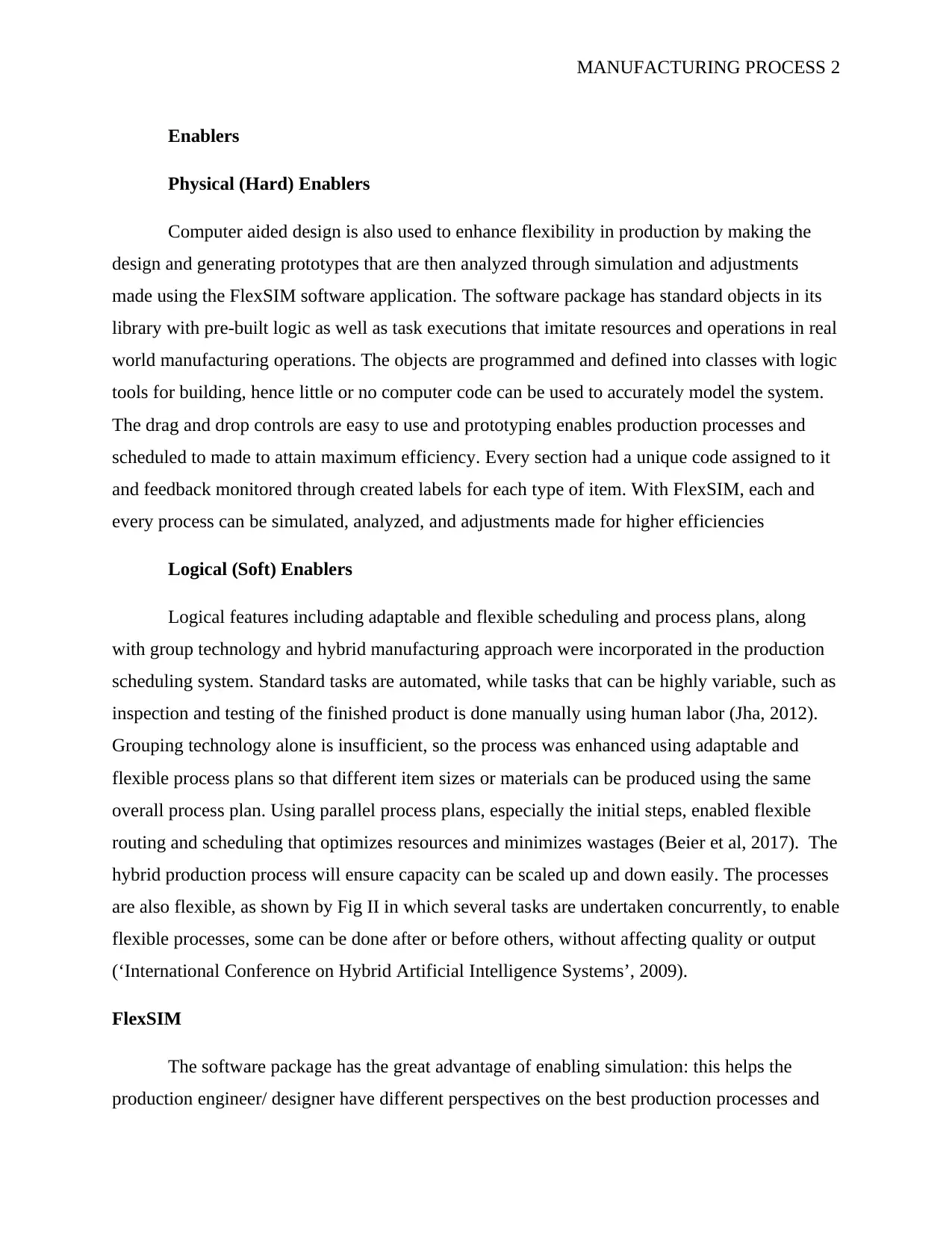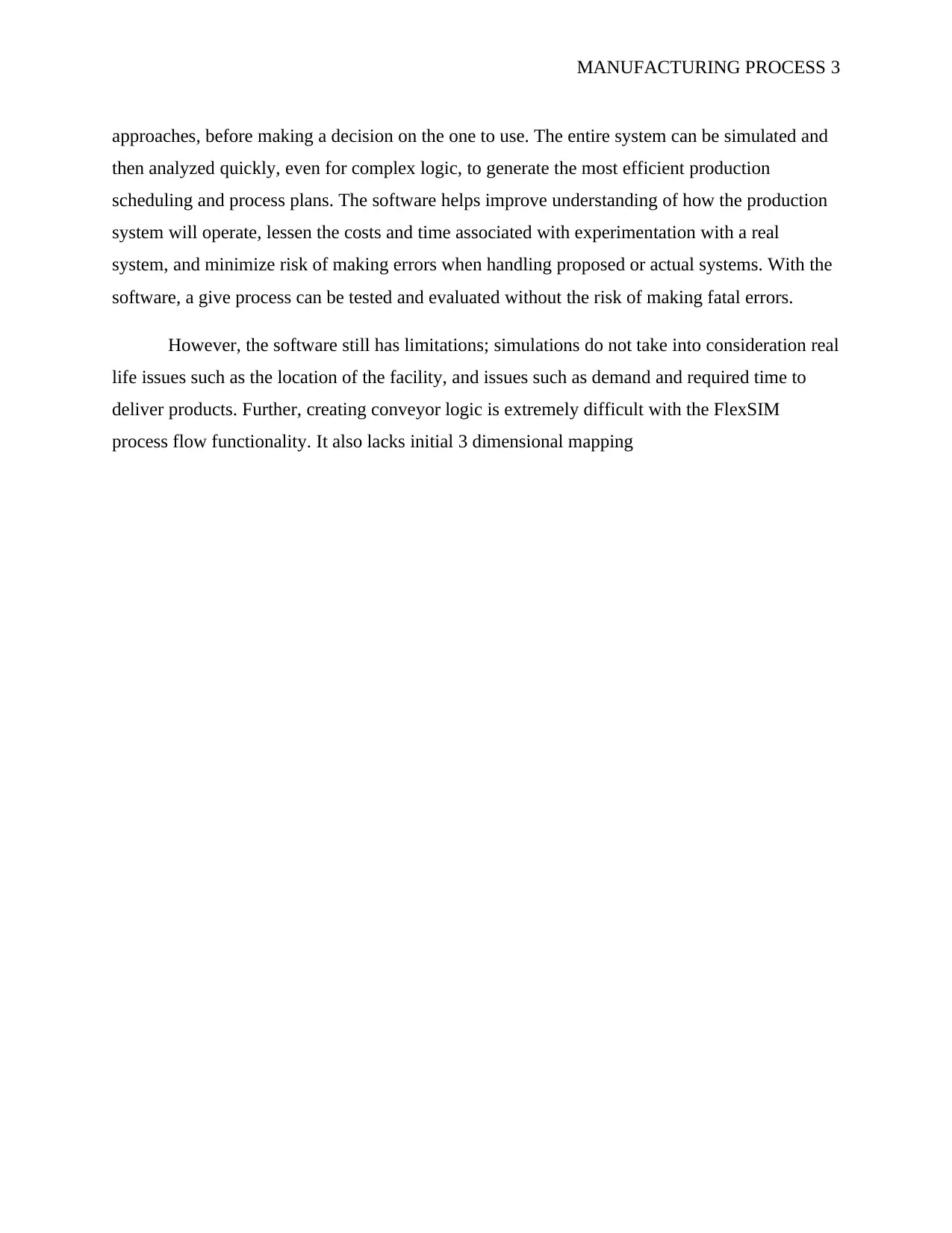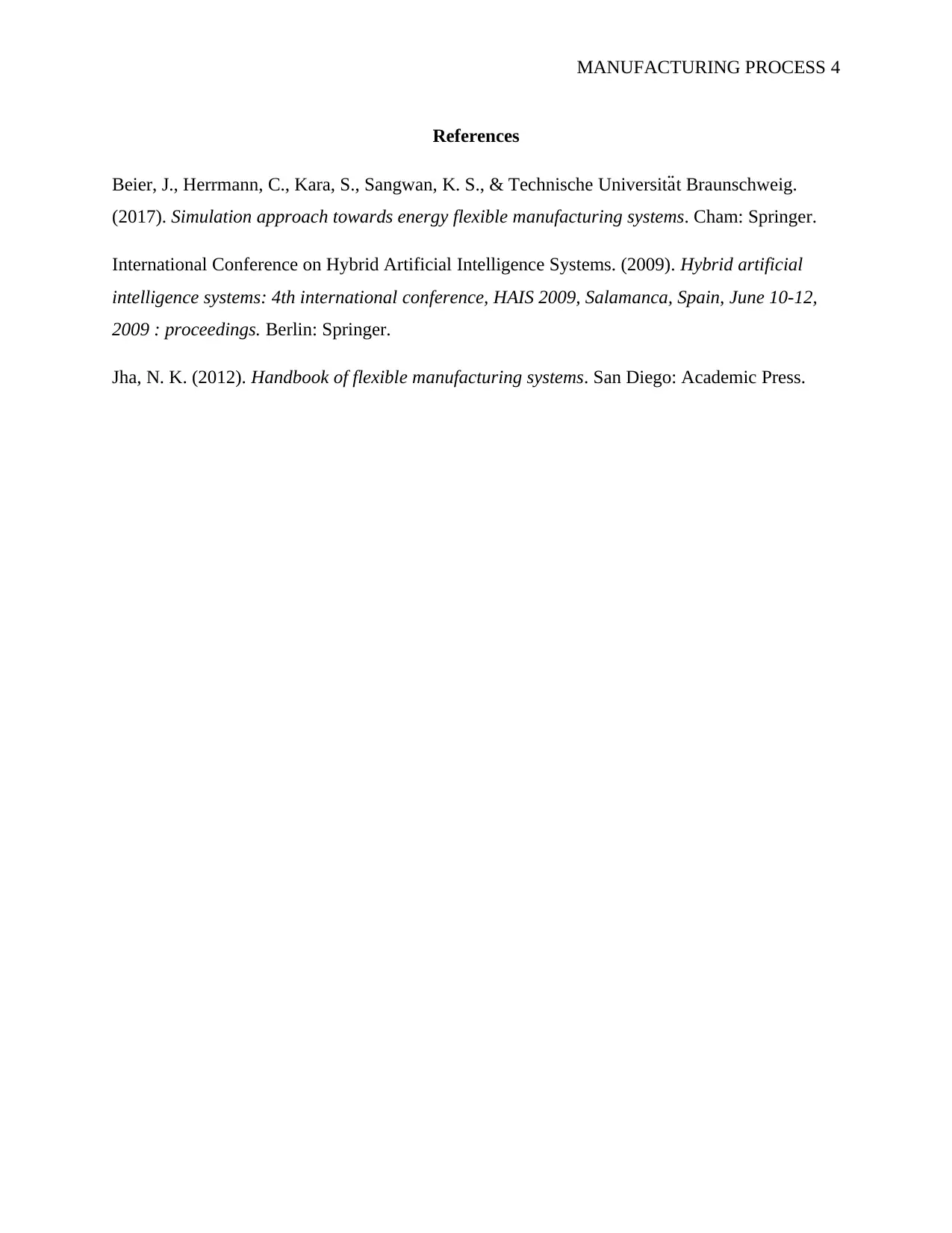Report on Manufacturing Process, FlexSIM, and Production Efficiency
VerifiedAdded on 2021/04/17
|4
|641
|75
Report
AI Summary
This report analyzes a manufacturing process, focusing on the use of FlexSIM software for simulation and optimization. The report explores the integration of both physical and logical enablers, including computer-aided design and adaptable scheduling, to enhance production efficiency. It highlights the capabilities of FlexSIM in simulating various production scenarios and its role in process planning and resource allocation. The report also discusses the benefits of flexible manufacturing systems and hybrid production processes, as well as the limitations of FlexSIM, such as the lack of real-world considerations and challenges in conveyor logic. Several references are included, which provide the basis for the analysis of the manufacturing process.
1 out of 4











![[object Object]](/_next/static/media/star-bottom.7253800d.svg)